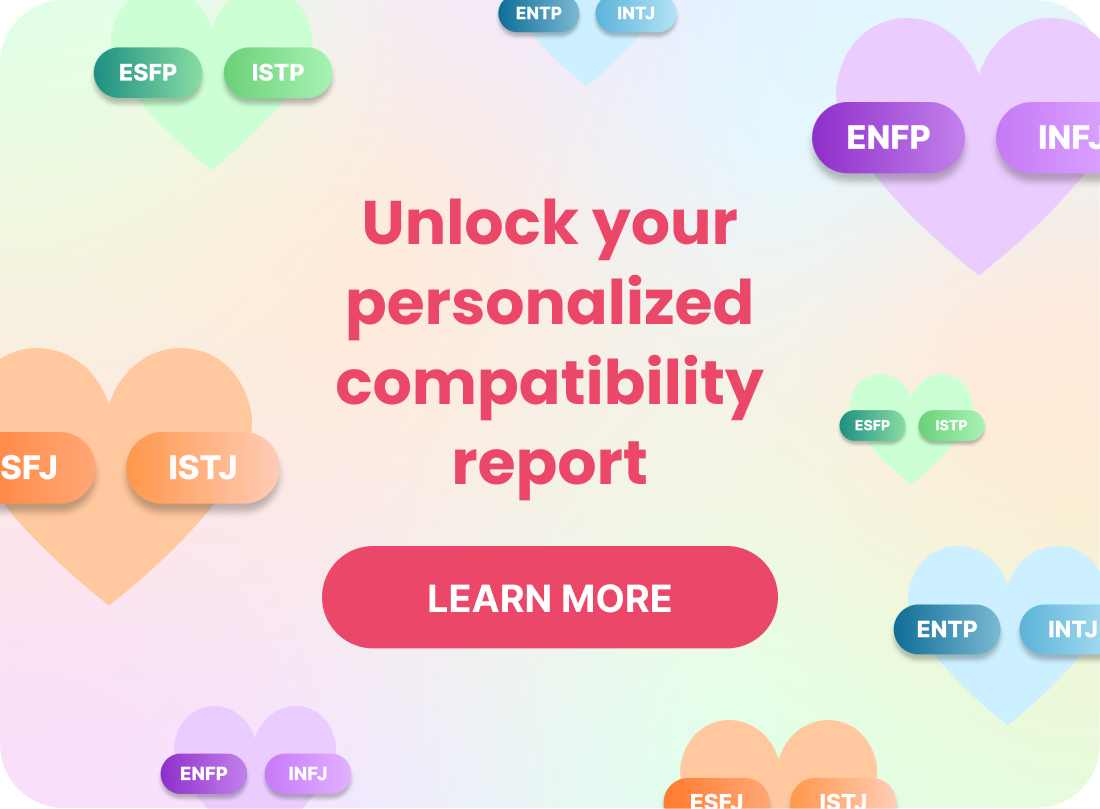Personality Types: The Fundamentals of the Theory

INFJ. ESFP. INTP. What does it all mean? And how many personality types are there? These four letters describe one of 16 different personality types, and each letter represents certain personality traits. Everyone is a mixture of all the traits described by the letters, but people will show a preference for one letter over the other, even if it’s only a tiny bit.
Personality type dichotomies
Here are the four personality type dichotomies:
- Extroversion (E) vs. Introversion (I)
- Sensing (S) vs. Intuition (N)
- Thinking (T) vs. Feeling (F)
- Judging (J) vs. Perceiving (P)
Let’s take a look at each one in more detail.
Extroversion (E) vs. Introversion (I)
The extrovert vs. introvert dichotomy represents the source of a person’s energy. It’s often assumed that extroverts love to be around people and introverts like to be alone, but it’s not that simple. In reality, extroverts are energized by interacting with the outside world, whether it’s seeing friends, playing sports, or setting up a new business venture. Introverts are energized by focusing on their inner world.
Sensing (S) vs. Intuition (N)
The sensing vs. intuition dichotomy indicates how a person perceives information. Most of the dichotomies have a fairly even split, except for this one. Roughly 70% of the population are sensors and 30% are intuitives. Sensors prefer concrete, verifiable information. They are more literal and detail-orientated. Intuitives favor theories and abstract concepts. They are comfortable inferring meanings from ambiguous information and focusing on the bigger picture.
Thinking (T) vs. Feeling (F)
This thinking vs. feeling dichotomy reflects how a person processes information. Thinkers prefer to use impersonal metrics to process information and tend to make decisions based on objective logic. On the other hand, feelers pay more attention to the people aspect of situations when making decisions and are more concerned about maintaining harmony.
Judging (J) vs. Perceiving (P)
The perceiving vs. judging dichotomy indicates how a person acts on information. Judgers prefer to stick to a plan. They approach life in a structured way and are faster to seek closer when it comes to making decisions. Perceivers see structure as more limiting and prefer to keep their options open. They’re adaptable and are more likely to delay making a decision in favor of seeking out more information.
Find your perfect personality match
Curious to know your own personality type? You can take our free five-minute personality test to find out. And meet your perfect personality match on So Syncd, the dating app that matches compatible personality types. You can download So Syncd from your iOS or Android app store.




